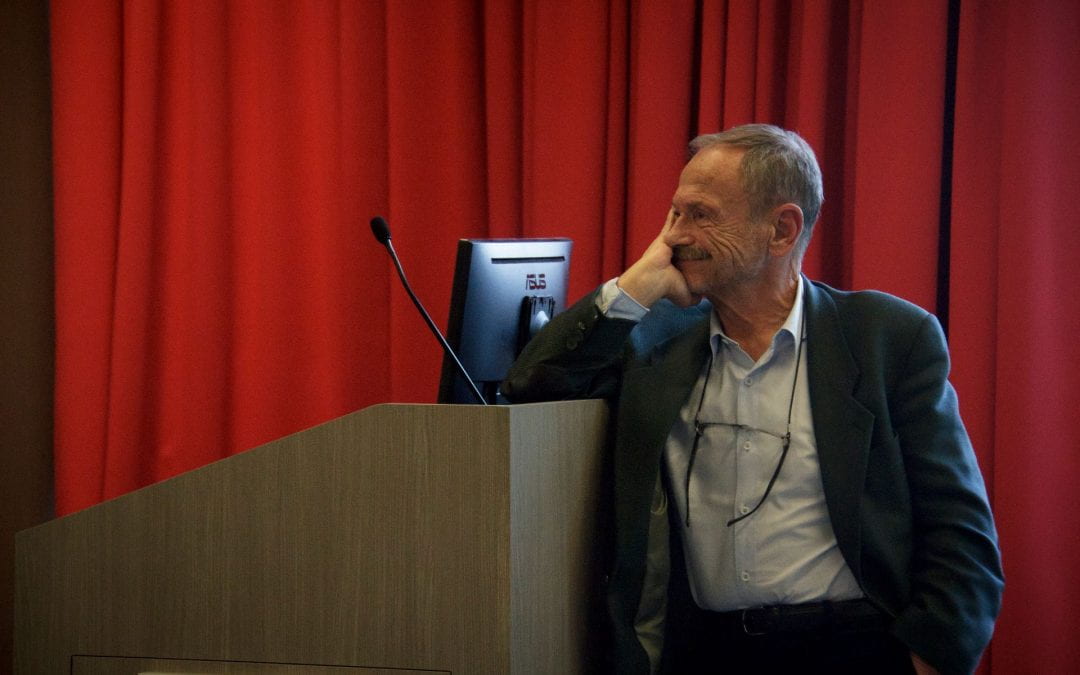Adam Przeworski, Professor of Politics at NYU, one of the world’s leading thinkers on democracy, visited University of Chicago on November 5th to participate in a conversation on the topic: “Are we in a crisis of democracy?” Susan Stokes, Faculty Chair of the Chicago Center on Democracy, moderated the conversation.
Their conversation covered questions such as: What exactly is democratic backsliding? How can it be prevented? What is polarization, and how does it relate to backsliding?
If you missed it, you can watch the recording here. Some key points from the discussion include:
- Democratic backsliding is a relatively new phenomenon. For historical dictators like the Roman praetor maximus (appointed by the Senate) and the Latin American general, their control of the state would have a clear beginning, and sometimes a clear end. But backsliding “smells different because of stealth,” according to Przeworski. Now, democracy is subverted subtly over time, and usually through constitutional means (1).
- Backsliders have the same goals as other politicians: to stay in power for as long as possible. To make that happen, almost all politicians engage in behaviors, often subtle, that subvert the fabric of democracy. The difference between democratic backsliders and other politicians is one of degree rather than type. “It might be a kind of fool’s errand to try to identify democratic politicians who don’t lie, break the law, do whatever they can to not just perpetuate themselves in power via being reelected,” says Stokes, “but perpetuate themselves, and get done what they want to get done, by any means necessary.”
- This subtlety is part of what makes the act of resisting democratic erosion so difficult. At what point do a series of small, usually legal changes to the system add up to a genuine threat to democracy? The consequences are only observed later. And if the opposition claims there is backsliding, how can they be trusted? After all, their entire raison-d’être is to push the incumbents out of power.
- The public can certainly become more aware of backsliding in their own country if they know about the international wave of democratic backsliding. But this only increases the danger of polarization by producing a group of unconditional supporters and a group of unconditional detractors. Plus, it can be very hard for the detractors to convince the supporters. People often don’t change their minds when proven false, and polarization certainly doesn’t help.
- Polarization is more than just the presence of large differences between what groups want. Polarization is also about how much each group has to lose if the other group manages to implement its policies. “The question then is, what do people with particular preferences think of people who have different preferences,” says Przeworski, “and what they are willing to do to people with different preferences.” Polarization is rapidly on the rise, and is even invading the fabric of our social relationships, with untold consequences. It’s also worth noting that democratic backsliders are often forces of polarization.
- Why do some politicians engage in more backsliding efforts than others? It could be preferences or constraints, or a combination of both. Determining what kind of systemic factors could limit erosion is “the item number one on the agenda for research,” says Przeworski. Creating and defending an independent electoral commission, maybe even as a coequal branch to the executive and legislature, is perhaps the most important step to take (2).
- Strong parties don’t always prevent backsliding; the evidence actually points both ways. It is interesting, though, that Europe’s party system, which dates back to the mid-1920s, is breaking down at the same time as the wave of democratic erosion makes its way around the world.
- Finally, where does all this backsliding come from? In part, it could be simple accidents of history, as individuals realize that they can push the system much further than had been previously considered possible. But there could also be deeper causes, like the rampant inequality within societies created by the current form of global capitalism. Ultimately, democratic backsliding is more than a product of politics alone, says Przeworski, “the dynamics of it is deeply in the society and the economy.”
See the full discussion on the Chicago Center on Democracy’s Facebook page: https://www.facebook.com/ChicagoCenterOnDemocracy
(1) Want to know more about democratic backsliding / democratic erosion? Check out How Democracies Die, by Stephen Levitsky and Daniel Ziblatt.
(2) For more on the institutional mechanisms and mitigators of backsliding, see How to Save a Constitutional Democracy, by Tom Ginsburg and Aziz Huq.
Written by Justin Saint-Loubert-Bié
